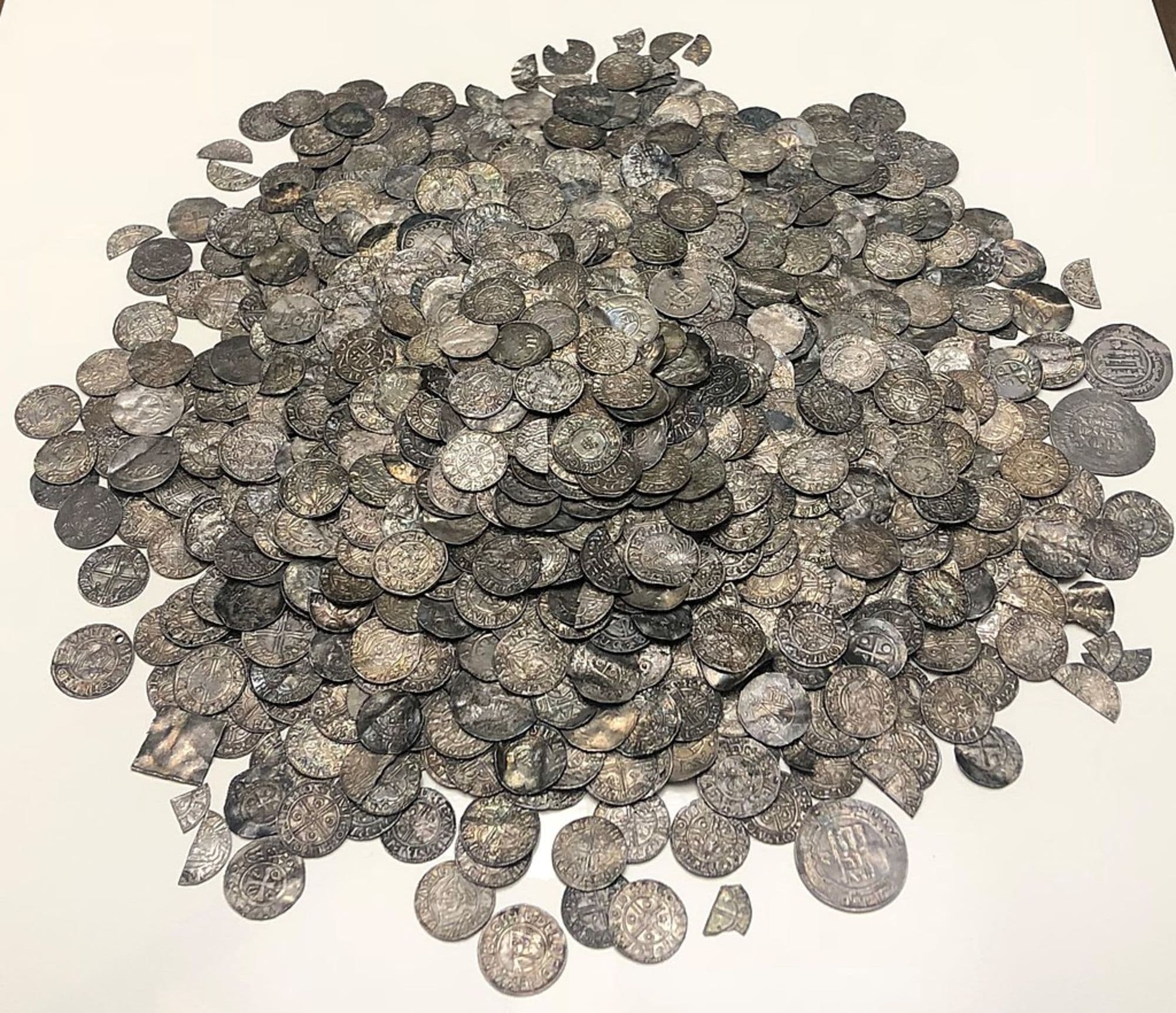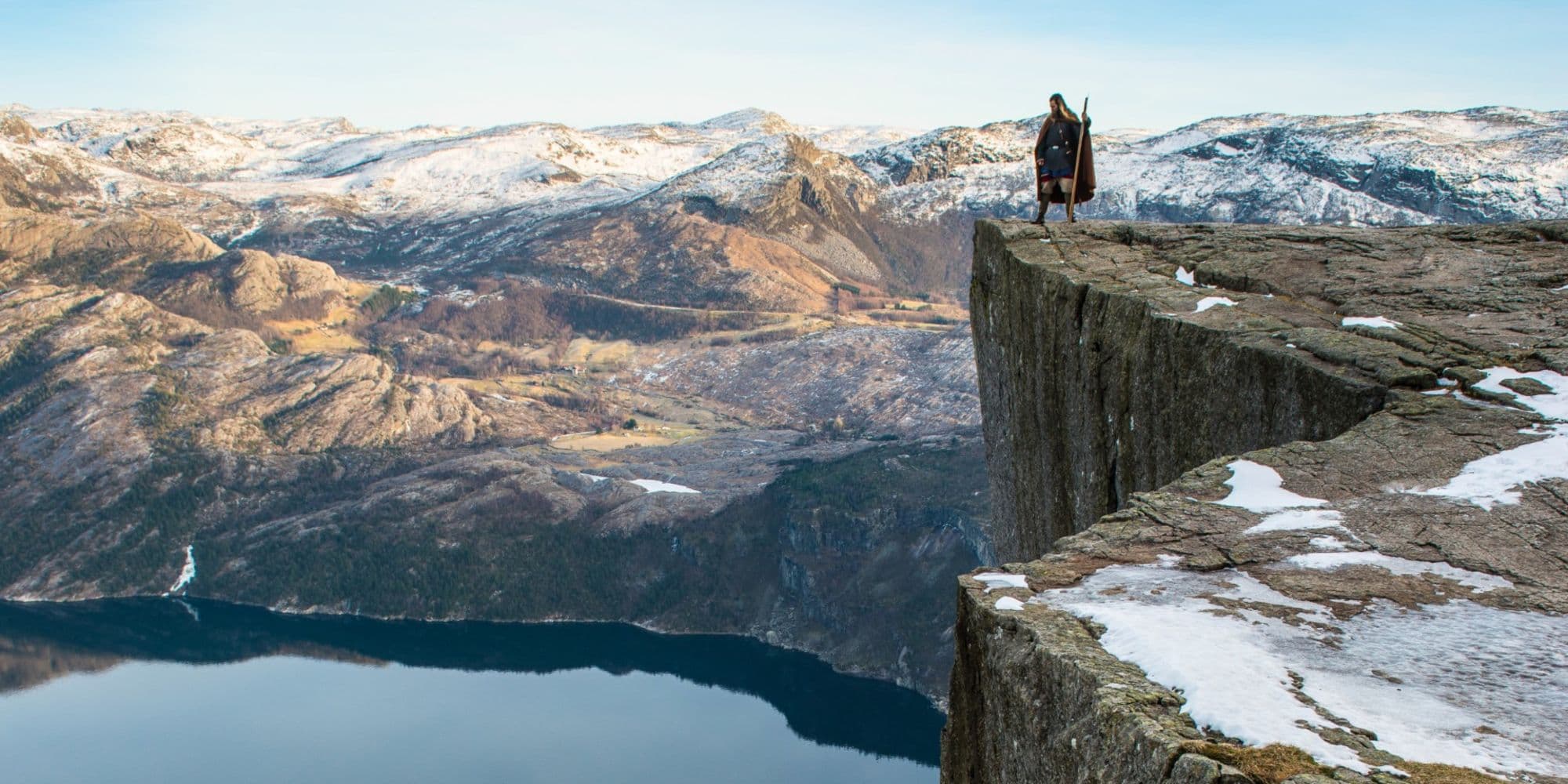
— Would you like to visit Preikestolen like Ragnar Lothbrok in Vikings?
Culture and history
The Viking Age meets the Middle Ages – historical sites you can experience
- Winter
- spring
- summer
- autumn
Last updated 2025-10-13
Experience real Viking history in the Stavanger region! Visit churches, ruins and cultural landscapes where the Vikings lived, traded and shaped Norway over 1,000 years ago.
Hidden memories from the Viking Age
The Stavanger region is full of exciting places where history stretches back thousands of years, long before the churches we see today were built. Several of the areas surrounding the medieval churches show clear traces of activity during the Viking Age, in particular. Here you can gain an insight into how people lived, traded and built communities along the coast over 1,000 years ago.
The Vikings' coastal life and settlements
Sørbø Church – the Vikings' coastal life
Sørbø Church on the island of Rennesøy was built around 1140, but the area had been used long before that. Not far from the church, archaeologists have found a boat house over 30 metres long dating from the late Viking Age. This suggests that Sørbø was an important place for seafaring, perhaps as a harbour or trading centre. With views of the fjord and a short distance to the sea, people have used this coastal strip for thousands of years.
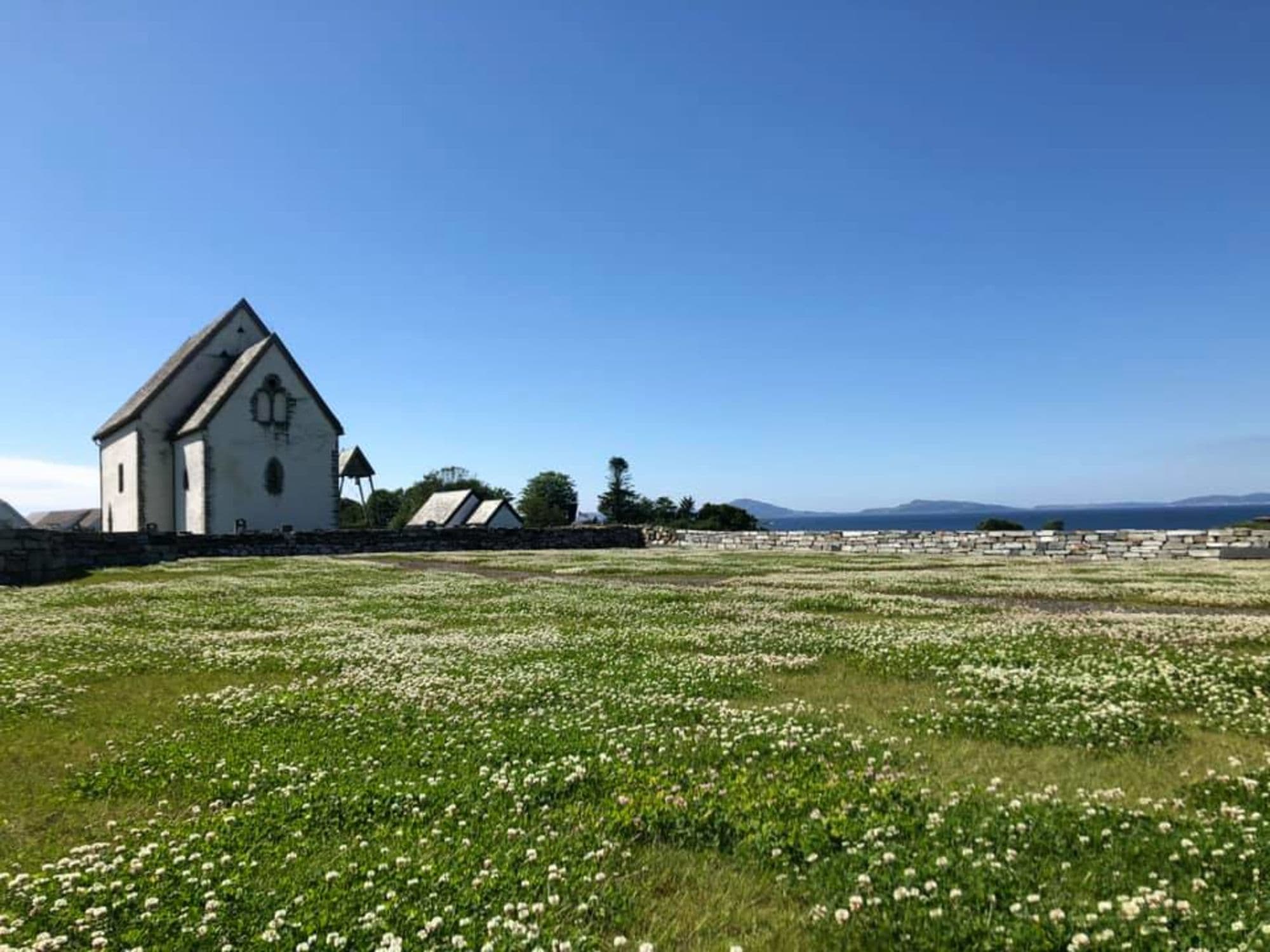
Architecture and heritage
Sørbø church
Rennesøy and the green islands
Sørbø Church is a medieval stone church located near the E39 motorway, a few kilometres from the ferry quay at Mortavika on the island of Rennesøy.
Sola ruin church – a church with traces of the Viking Age
Sola ruin church dates back to the 12th century, but the history of the site goes back even further. Archaeological finds show that there was a settlement here as early as the Viking Age. Among other things, pit houses – small, sunken buildings used for crafts or storage – have been found right in front of the church. A silversmith's workshop has also been found at the airport. These traces indicate that the Sola area probably played a central role in Rogaland during the Viking Age.

Architecture and heritage
Sola ruinkyrkje (ruin church)
Sola
Sola ruinkyrkje is a rebuilt medieval church. The church was until the 19th century an important sailing mark for the Jæren coastline.
Hå old vicarage – traces of the Viking Age
Hå old vicarage is located in an area rich in history, and archaeological finds show that the site has been inhabited since the Iron Age and Viking Age. Nearby, burial mounds have been found that link the area to Viking Age communities and settlements. This suggests that the area was at the heart of a vibrant landscape where people farmed, traded and socialised during the Viking Age. Several of the graves found here date from before the Viking Age, including an interesting female grave from the 900s.
The vicarage itself later became an important place for the local community, but its roots go back a long way, and the area provides insight into how people lived, died and organised themselves before and during the Viking Age.

Art and museums
Hå gamle prestegard
The Jæren beaches
Experience modern art and culture in historic surroundings on the very edge of Norway.
The transition to Christianity and the Middle Ages
Utstein Monastery – from the Viking Age to the Middle Ages
Utstein Monastery on the island of Mosterøy is Norway's best-preserved medieval monastery, founded in the 13th century. However, the area around the monastery has been inhabited since the Viking Age, and archaeological finds show that this was an important settlement and a hub for trade and shipping. The history here, therefore, stretches further back than the monastery's stone walls and provides a fascinating insight into the transition from the Viking Age to the Christian Middle Ages.
Building dating from the Viking Age, where Stavanger Cathedral stands today
During the restoration of Stavanger Cathedral, several exciting finds from the Viking Age were made before the church was built. Among other things, meal remains such as pig bones and pit houses, where combs had been made, were found. The Archaeological Museum at the University of Stavanger believes that this shows that there was a trading post here as far back as the Viking Age.
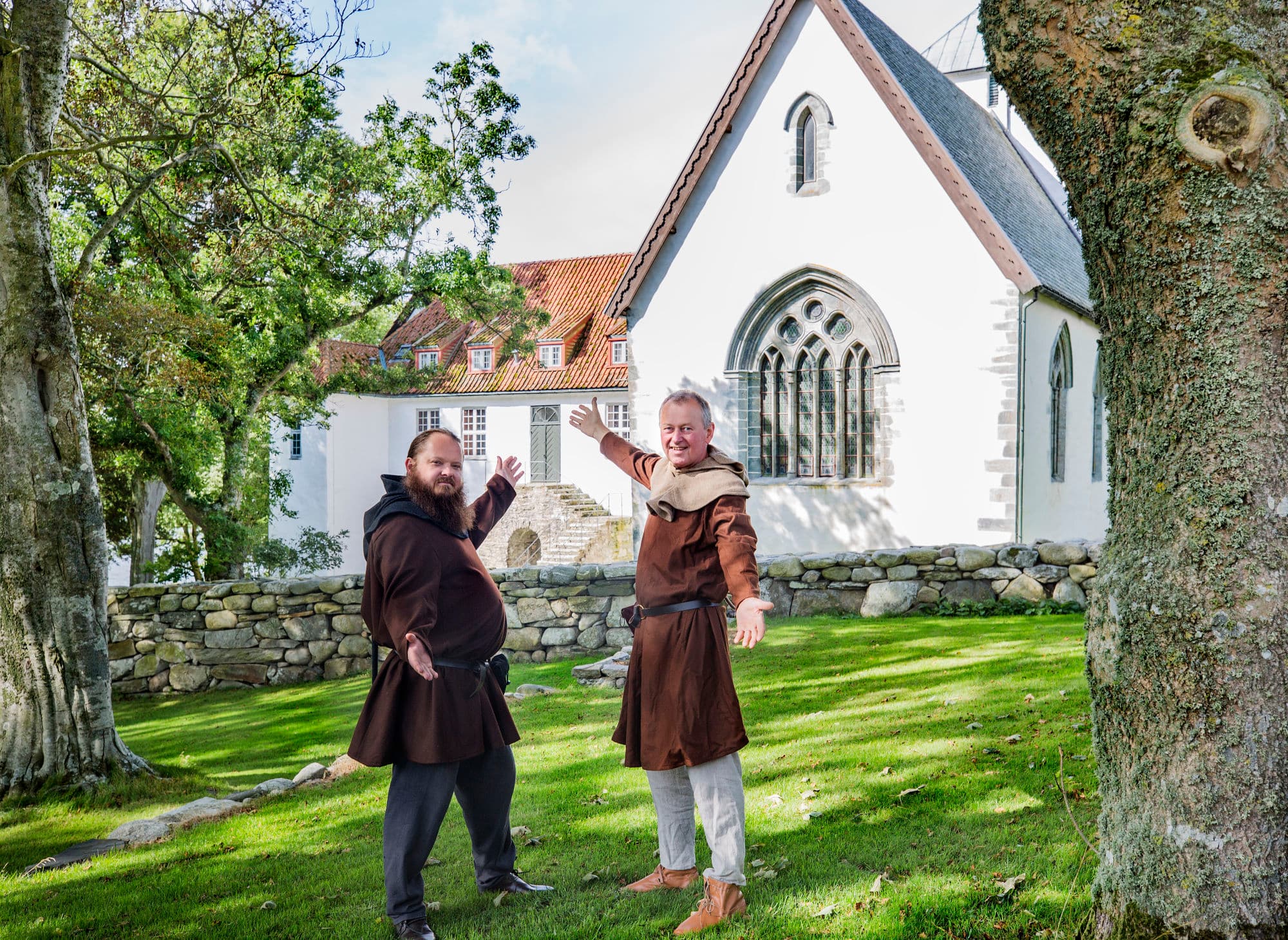
Architecture and heritage
Utstein Monastery
Stavanger
Utstein Monastery is Norway’s best-preserved medieval monastery, beautifully situated in a protected cultural landscape on the island of Mosterøy, about a 30-minute drive from Stavanger.
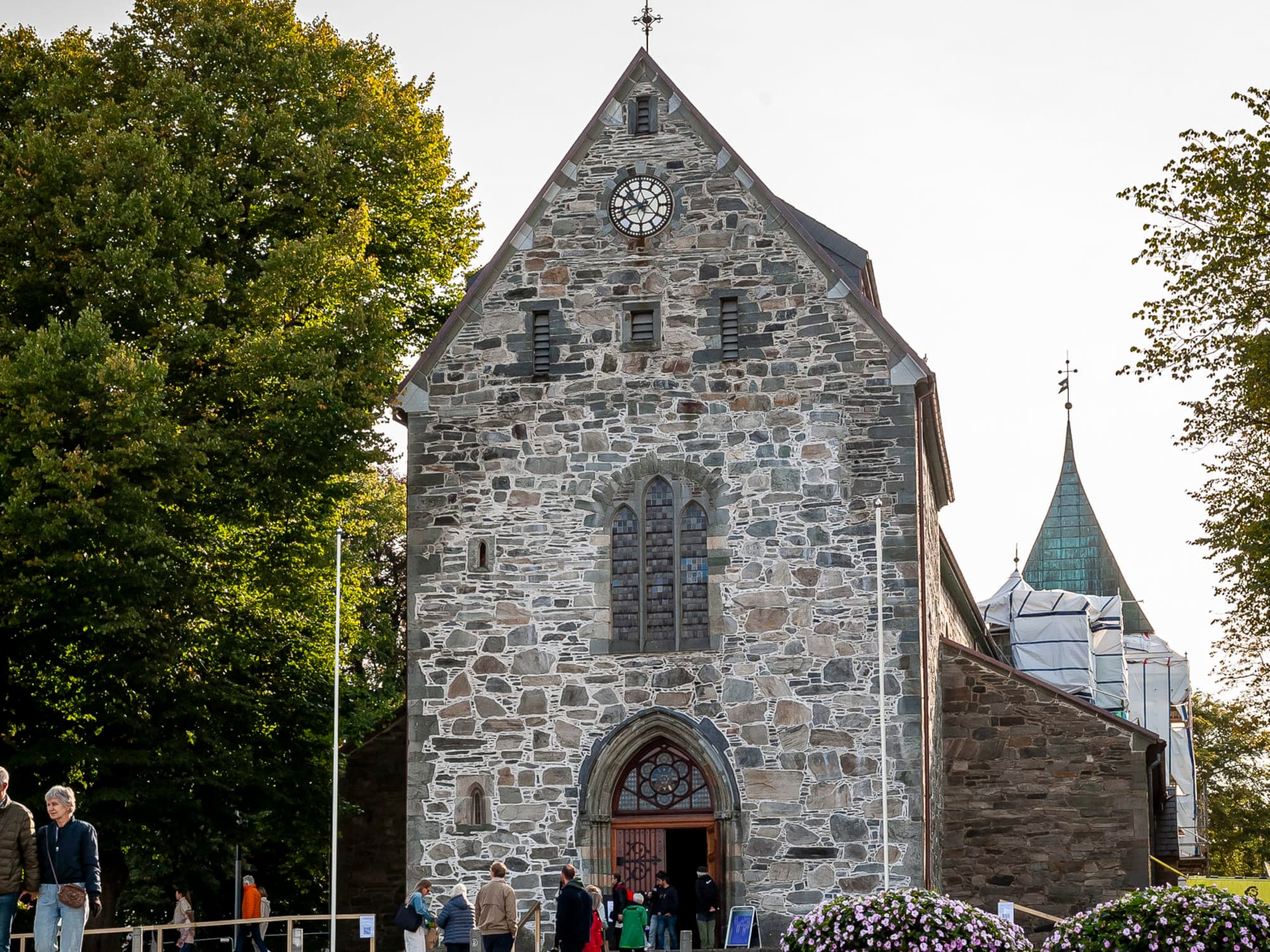
Architecture and heritage
Stavanger Cathedral
Stavanger
Stavanger Cathedral is the only cathedral from the Middle Age that has kept its original architecture, and the only Norwegian cathedral in continuous use since the 1300s. Norway's best-kept cathedral is located only a stone's throw from the Stavanger harbour.
Defence and communication in the Viking Age
Beacons and warning systems – the Vikings' “warning towers” at Varberg
During the Viking Age, rapid communication along the coast was crucial for warning of enemy ships approaching. An important warning system was the "Veter" — wooden stakes erected in high places, which could be lit as a signal.
At Varberg in Egersund, with its strategic location, there were probably systems for monitoring the fjord and warning the inhabitants of Egersund harbour.
Egersund was an important Viking harbour with access to both sea routes and resources, making it a key hub for trade and defence. Varberg is a hill with good visibility, providing perfect conditions for sending signals along the coast – an early form of “alert tower”.

On your own
Varberg in Egersund
Egersund
Easily accessible gem of a lookout point at just the right length from the Egersund centre.
Treasures and sagas
The Årstad treasure – the Vikings' secret treasure chamber
What if you could find a real Viking treasure? Well, that's exactly what happened in 1836 at Årstad farm in Egersund! While clearing some land, farmer Ole Sivertsen Aaberg found over 1,800 silver coins and several pieces of jewellery – a treasure weighing a total of 2.3 kilos of silver! The so-called Årstad treasure is Norway's largest coin hoard from the Viking Age.
The treasure includes many coins minted during the reign of Canute the Great, who was king of both Denmark and England. This links the find to King Canute's journey to Norway in 1028, when he sought support among Norwegian nobles. The youngest coin in the find suggests that the treasure was buried around 1030.
Who knows – maybe there are more hidden treasures out there, waiting to be discovered!
Gyda and Harald – love that united Norway at Hafrsfjord
The story of Gyda and Harald Fairhair is one of the most famous sagas of the Viking Age. According to the sagas, Gyda refused to marry Harald until he had united all of Norway into one kingdom. Motivated by this challenge, Harald gathered his forces and fought the Battle of Hafrsfjord around 872 – a battle which, according to tradition, marked the beginning of a united Norway under one king.
Today, you can visit Hafrsfjord, just outside Stavanger, and see the Hafrsfjord monument, Swords in Rock, an impressive sculpture honouring this important battle. The three swords symbolise peace. The area also offers beautiful scenery, hiking trails and opportunities to feel the history in the place where Norway was united.
Gyda and Harald's saga is not only a love story, but also the story of a country that became one – a story that lives on in Rogaland's landscape and culture.

Architecture and heritage
Swords in rock
Stavanger
The Swords in Rock monument in Hafrsfjord, Stavanger marks the Viking battle of Hafrsfjord when Norway was united into one kingdom.

Architecture and heritage
Hafrsfjord
Sola
Hafrsfjord is best known from Norwegian history for the great Viking battle of Hafrsfjord. There are also great hiking trails and swimming areas here.
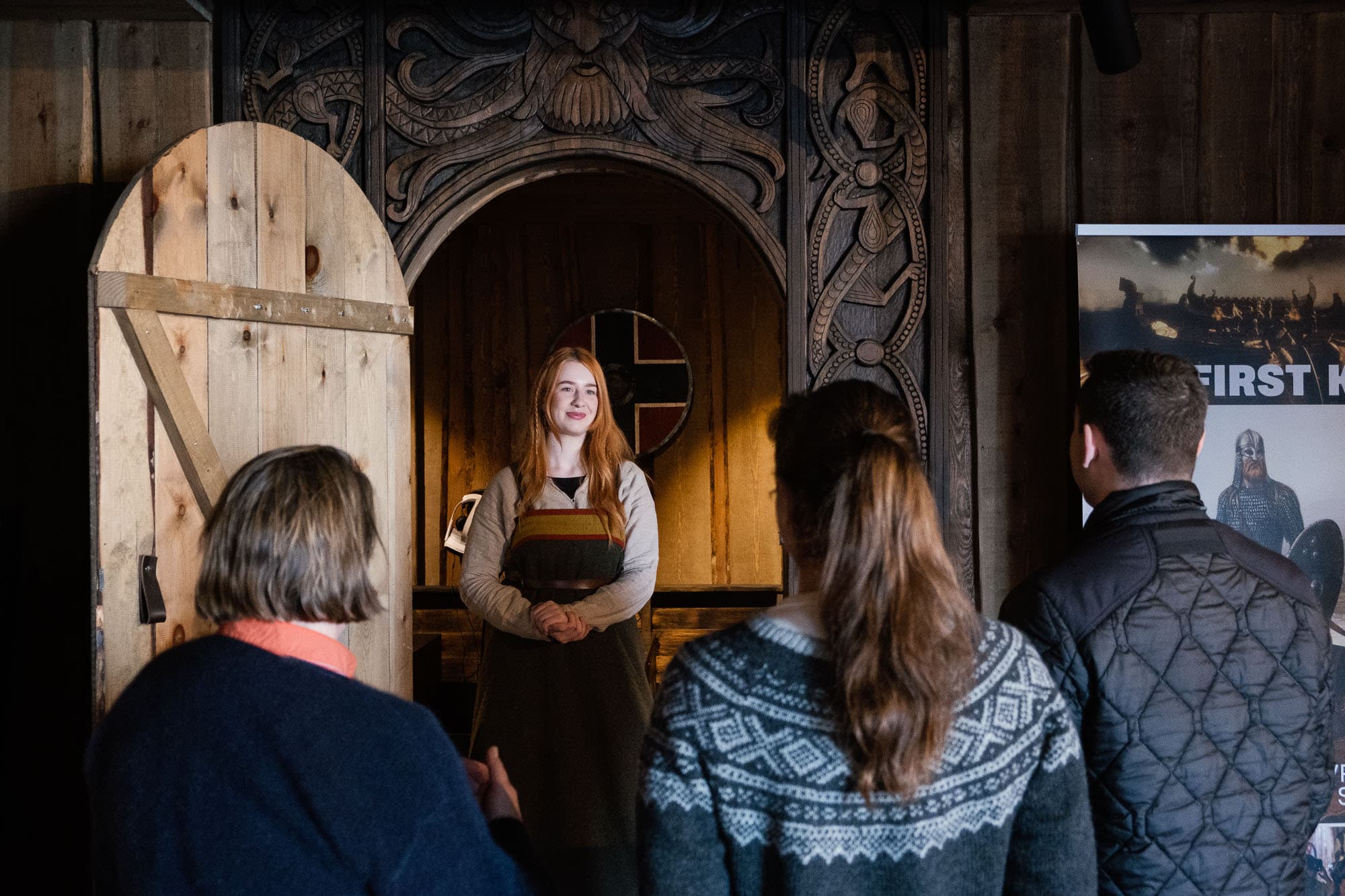
Architecture and heritage
Viking House
Stavanger
Viking House is a groundbreaking concept. A Virtual reality-based world-class visitor centre conveys the Viking history of the Stavanger region.
Ragnar on Preikestolen – the Vikings' selfie before it was cool
In the season finale of Vikings (season 2, episode 10), we find Ragnar Lothbrok at the top of Preikestolen – 604 metres above Lysefjorden – taking a break from conquering the world to enjoy the view. This episode was filmed at the real Preikestolen, and it is one of the most iconic scenes in the series.
But wait a minute – Ragnar was from the 800s, and Preikestolen didn't become famous until long after that. So, how did he end up there? Well, that's Hollywood magic for you!
If you want to do like Ragnar and take an epic selfie, you can climb Preikestolen yourself. The hike takes about 2–3 hours one way, and you'll be rewarded with a view that will make you feel like a Viking on top of the world.
So, put on your hiking shoes, pack a sword (or maybe some snacks instead), and get ready for an adventure that even Ragnar would envy!
Mountain hikes and walks
Hike to Preikestolen in the Lysefjorden
Strand municipality
Preikestolen (the Pulpit Rock) rises 604 metres above the Lysefjord in Ryfylke, and is one of Norway's biggest attractions. The view at the top is stunning.
Ritual sites
Domsteinane - a mysterious stone circle from the Iron Age
Domsteinane is an impressive stone circle in Sola, close to Hafrsfjord, consisting of 12 standing stones. Although the site probably dates from the Early Iron Age (around 500 BC-500 AD), many believe that it was still in use and significant during the Viking Age.
The name ‘Domsteinane’ may indicate that the site was used as a courthouse - a gathering place where people met to resolve conflicts, make agreements and take important decisions. Such courthouses played a central role in Viking society, where laws were discussed and announced aloud.
Today, you can visit Domsteinane and walk in the footsteps of the stones - literally. Perhaps Vikings once stood here and discussed honour, land and laws?
Fun fact: Domsteinane is not far from Hafrsfjord, the site where, according to saga tradition, Harald Hårfagre united Norway!

Architecture and heritage
Domsteinene
Sola
Whether you are into history or Outlander, you may find these stone circles interesting. If they make time travelling possible is another matter though. But what where they used for these stone circles?
Sources
- Archaeological Museum at the University of Stavanger, via StoryMaps
- Stavanger Municipality – Cultural Heritage Plan Rennesøy (PDF)
- Utstein Monastery – Norway’s Cultural History
- University of Stavanger – Read more about the pig bone discovery in Stavanger Cathedral (Norwegian)
- UiS, StoryMaps
- Egersund City History Encyclopedia – Dalane Folk Museum
